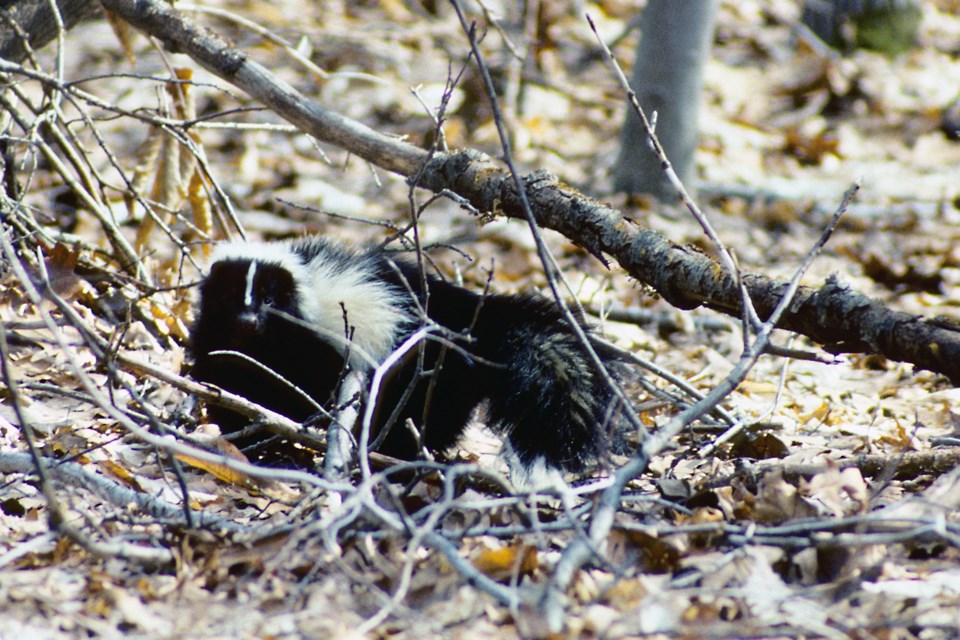Weasels are known by many names, such as politician, ex-partner, sly competitor, unscrupulous land developer... oops, I seem to have gotten off-track already. Weasels, the wild animals, do indeed go by many names, more properly known as mink, otter, skunk, wolverine, long-tailed weasel, short-tailed weasel, least weasel, and ermine. It's actually quite a widespread and interesting family.
Technically, the moniker 'ermine' is a winter name for the short-tailed weasel, so I seem to have embellished the above list of names. And now I'm being told (by that nagging little voice in my head) that a badger is also a weasel. So down one and then up one for the list. And yes, a ferret, that European polecat, is also one of the clan, if you want to start getting international.
The scientific name of this bunch of weasels is Mustelidae. There are several shared features to this group of mammals: their characteristic long, thin body shape with short legs; they are all superb predators; and they can produce a rather foul smelling odour out of their back end! Oh yeah, now you remember! Skunks! Pee-yew!
Another common trait is that their fur tends to be luxurious and tough, which means that the fur industry has long been interested in turning their pelts into jackets. Interestingly, the tightly monitored and strictly controlled fur industry has ensured that these species have remained in fairly stable populations despite changing and declining habitat availability.
All this interest in weasels is pertinent to me, as I've just come back from a walk in the woods and I now discover that I may be doomed, or maybe not. It all depends. You see, a small weasel confronted me on the pathway and my immediate reaction was: “Way cool!”
However, with later reflection, my mood swung sullen as the ancient Greek tale came to mind: a weasel around your house brings bad luck. Couple that with a story of North American native heritage that if a weasel crosses your path, a sudden death is imminent!
The good news is that when said weasel and I met upon the trail, I wasn’t right at home, wasn’t in Greece and, if I were to make a detailed map, our tracks never actually crossed each other’s. Whew!
One of the smaller members of this group of hunters is the ermine, or short-tailed weasel, which changes the colour of its coat from a two-tone brown and white in summer to an all-white pelage for the winter months (except for a black nose and tip of its tail). If you look at an older portrait of a younger Queen Elizabeth II when she is wearing the regal robes, the white fur which trims that fabric is ermine fur from Canada.
Trying to identify weasels is a bit of trick, as a big male short-tailed weasel is the same body size as a small female long-tailed weasel. Apparently, you have to catch them, determine if you have a male or female in hand and then measure the length of the tail vertebrate: females with a tail length being 70mm or less are short-tailed weasels, males with tail length being 95mm or less are also short-tailed. Easy-breezy field identification, eh?
Yet another cool fact about Mustelidae is that they can delay their pregnancy. Usual mating takes place in the summer with young being born after about 35 days of gestation; but some members of this family group, notably mink, otter and ermine, practice diapause, the delaying of the implantation of the embryo, for several months after mating. Scientists who study such behaviours are still scratching their heads as to why and how diapause happens.
Mink tend to hang around wetlands, feeding on frogs, fish, tadpoles, some insects and other mammals. Last summer as I was driving along a paved country road that cuts a wetland in half, a large leopard frog came hopping across the pavement. I thought that the oncoming truck would squash it for sure, but, fortunately, at the very last moment, it gave a huge leap and cleared the centre line. However, and most unfortunately, it landed right in my lane and I couldn’t avoid the large amphibian. Such a mess.
A bit shaken, and now driving a bit slower, I noticed another shape moving along the shoulder of the road. A mink! Perhaps drawn to the road by the scent of squished frogs, or maybe just checking for other carnage, the mink appeared intent on crossing the road.
Just as I was about to intersect the point of my travel with the mink’s intended route, it stopped on the white line. I shot past without incident. In the rear-view mirror I saw the mink turn and amble back to the cattails.
Another species of Mustelidae that is found with some regularity is the striped skunk. Actually (and probably like you) I don’t usually see the skunk but rather smell its presence. The scent of a startled skunk is rather unmistakable and manages to permeate the air for a pretty wide area. Once encountered, never forgotten.
I count myself lucky to have seen these animals, as they are quite adept at staying hidden. They are adaptable critters and, despite our never-ending encroachments into and onto their habitat, they remain and thrive, a testament to their tough survivalist attitude as predators. We should be in awe of their tenacity ... that and their mythical ability to foretell sudden death.
